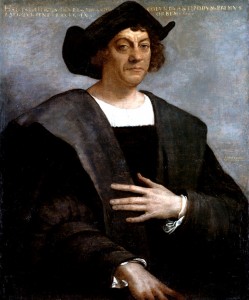Exciting news for underwater explorers:
Underwater archeological explorer Brandon Clifford believes that he has discovered the remains of Christopher Columbus’ flagship, the Santa Maria, off the northern coast of Haiti. The ship rests on a reef, just 10 to 15 feet below the water’s surface.
If it does turn out that the discovery is the Santa Maria, it will be one of the most significant underwater archeological discoveries in history.
The Santa Maria was the largest of Columbus’ three ships used on his first voyage to America (Remember from elementary school history class: the Nina, the Pinta, and the Santa Maria), and was owned by Juan de la Cosa. She had a single deck and three masts, and her sails were marked with large crosses.
According to CNN:
The “smoking gun” that led Clifford to believe the ship is the Santa Maria is a cannon of 15th century design that was found at the site, he said.
“It is the Mount Everest of shipwrecks for me,” the 68-year-old Clifford said. “This ship changed the course of human history.”
* * * * *
Did you know that the ship was actually named after the Immaculate Conception?
Its full name in Spanish was La Santa Maria de la Inmaculada Concepción (Spanish for The Holy Mary of the Immaculate Conception). Crew members casually referred to the ship as Marigalante, Spanish for “Gallant Maria”.
The Santa Maria has one more connection to the Catholic faith: In December 1492, Columbus had permitted his crew to celebrate Christmas with festivities and drinking; but he then ordered the men to continue sailing toward Cuba late into the night. The sailors, fatigued and under the influence of strong drink, one-by-one kept falling asleep until only the cabin boy was left to steer the ship. Under his inexperienced hand, the ship ran aground off the coast of Haiti on Christmas Day. Columbus, realizing that the ship could not be saved, ordered his men to strip the timbers from the ship. The timbers were later used in construction of a fort which Columbus named La Navidad (Christmas).











